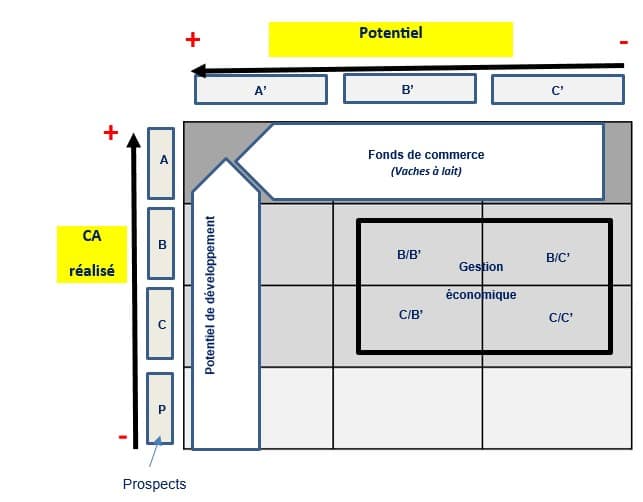Anticipation has become a major skill and good time management a tool for success. So what are the best practices for managing your time better? How can you be more efficient? Jean-Marie Quil, consultant trainer, sales director in the food industry and training director in the heat industry, explains.

A rush of adrenalin, a taste for risk... By neglecting anticipation and organisation, you might think that poor time management offers hidden advantages.... However, in your day-to-day business life, the effects are real and significant:
- Pressure constant
- Energy expended without optimum results
- Timetables exceeding limits of reasonable
- Accumulation of a excessive workload
Don't panic, you can learn how to manage your time. Here are some good practices to follow to help you in your day-to-day work and gain peace of mind.
How can you better manage your time at work?
Identify your tasks
First, list the main tasks and activities you carry out on a daily basis.
Compare time truly dedicated to each of them in relation to the theoretical ideal time.
Example: Ideal Me
Customer visits 60 % ?
Prospecting 20 % ? Be careful not to exceed 100 %
Administrative 20 % ?
Defining your priorities
These are think and choose. A system of priorities poses a hierarchy of values.
- Medium and long-term objectives
- Short-term operational objective
- Targeting customers and prospects according to their potential
You can use tools to plan and organise your tasks. These can be integrated into your CRM or another tool specific to your company.
[Also read]
Targeting customers
Draw up the crossed "ABC" matrix. This matrix is based on Vilfredo Pareto's law:
- ABC is based on turnover. A'B'C' is based onr your assessment potential.
A' is a high potentialeven if they are already a customer. C'is considered a low potential. What about B'? It's a dilemma.

Thinking and measuring your actions For example, an A C customer can no longer progress, but he still generates significant sales. You therefore need to ensure a high frequency of visits to maintain their level of sales..
On the other hand A C A customer with low sales but high potential. You're going to have to devote a certain number of visits to this customer, focusing on exploiting their potential.
Obviously, this matrix is not frozen in time. Some prospects become your customers, some customers leave you, some grow and some shrink.
It is important to keep the ABC matrix going at a regular pace in order to maintain its effectiveness.
Managing the unexpected
Build dedicated time slots into your timetable to anticipate unforeseen events. Depending on the size of your geographical area and the time needed to reach the most remote points, it is advisable to plan two free slots, ideally at the beginning and end of the week.
An overloaded diary doesn't stand up to use.
[Training]
Improve your personal organisation
Put into practice techniques for planning your workload, managing the unexpected and staying on top of your objectives.
Participants speak out:
"A variety of methods and techniques that I'll be able to use to organise myself better and, above all, prioritise and have a clear vision of my days and weeks.
"This clear vision of the different organisational techniques will enable me to implement these tools quite easily to improve my organisation and communication with my colleagues.
"Being able to combine concepts that are both professionally and personally applicable makes you feel even more involved in the training."
Preparing and anticipating
Prepare your visits history, context of the catchment area, competition.
You can't imagine the leader of a commando group going off on a mission and saying"I'm good, I'll see where I am, I trust my intuition, I'll improvise".
Depending on your sector of activity, you can move away from the "day" scale.
Think ahead:
- Weekly: customers with an annual frequency of 40 visits
- Monthly: customers with an annual frequency of 10 visits
- Quarterly: customers with an annual frequency of 4 visits
- Or even on an annual basis, if you are conducting annual negotiations.
These frequencies are given for guidance only and may be adjusted according to the strategies communicated by your manager.
Example
Élodie, Regional Manager, has noticed that setting fortnightly and monthly appointments has had a positive effect on her team. The result: more serenity in the team. The mental workload associated with the "fear of forgetting" has been greatly reduced, eliminating the need to respond "on the spur of the moment", which is not always appropriate.
Avoid sprinkling your work
Over a year, you have a potential of on the order of 220 working daysThen there are various deductions: departmental meetings, seminars, training courses, administrative tasks, etc. Depending on the job, this leaves 120 to 140 days dedicated customer visits, monitoring and surveys.
Depending on your sector of activity, your portfolio of prospects or customers and their geographical location: plan your daily, weekly or monthly meetings.
Preparing to respond to objections
A customer who objects is someone who shows an interest.
Anticipate objections possible. Whatever your field of activity, 80 % of objections are similar. Take stock, compile a list of the most difficult and share them with your colleagues. This sharing is a real time-saver, especially for newcomers.
The way you respond is very important and must be adapted to the person you are talking to, depending on their profession (technical, sales, finance) and personality.
Avoid making the other person lose face. A "triumphant" response can offend them and cost you business.
[Training]
Responding to customer objections
How can we understand, assess and anticipate objections? How can you listen positively to objections and use them as leverage? Using practical examples, develop your communication strategy to respond to the objections you are usually faced with in your sales activities.
Ultimately, good preparation makes you more serene, increases self-confidence and greatly reduces the stress that can disrupt your outlook.
Time is the most precious resource because it is non-renewable.
Communicating effectively for greater efficiency
A good sales argument involves ownership marketing departments and adapting them to the needs of the market. personality of the person you are talking to.
If you simply recite the marketing document, you lose impact because, however relevant it may be, it doesn't reflect you or your customer's personality.
[Also read]
Building an effective sales pitch
An essential part of the sales process, the sales pitch is an exercise that needs to be prepared and built methodically. Discover the 6 steps to help you prepare your sales pitch.
In other words, pay attention to your communication. Prepare a response that incorporates a :
- Cognitive: adding relevant information
- Affective: taking emotions into account
- Conative: encouraging action
Adjust your communication to match your prospect's expectations and profile.
Analysis tools for personality types to identify the communication channel adapted to each of your contacts.
Le Process Communication Model® used by NASA to recruit astronauts and their compatibility in stressful situations highlights 6 personality types and their preferred mode of communication, language and channel of communication.
Other analysis tools are also available: MBTI, enneagram.
Know how to say no
Be uncompromising about your main task: visiting customers and prospects.
Case studies
Grégoire, a technical sales representative for an industrial group, admits that he was trapped by the demands of his marketing department: specific customer surveys on product launches, competitive analysis, etc. Until he realised that his administrative time (reports, updating the CRM, making appointments, proposals and quotes, etc.) had doubled, to the detriment of his customer visits. The time devoted to administrative management rose from 20 to 40 %, or 2 days a week.
Grégoire therefore warned Nathalie, Marketing Director, that his frequent requests were likely to have a negative impact on his results and that he could no longer respond to them systematically. Requests would now have to go through Grégoire's N+1, who would distribute them fairly among the other members of the team.
Relevant communication saves time. You can do this by strengthen your assertiveness.
Rely on 2 pillars:
- Empathy, active listening
- Conviction, persuasion
There are 4 main types of behaviour: evasion, aggression, manipulation and assertiveness. Assertiveness stands out because it is the most appropriate behaviour for communicating effectively. The other three behaviours, which are less constructive and less productive, should be avoided.
Assertiveness is the best way to communicate effectively, confidently and authentically.
Anticipate, prepare... The techniques for managing your time are well known, but often not applied, if at all. Putting these techniques in place requires not only awareness, but also personal motivation to maintain them over time. ORSYS training courses such as Managing your time to be more efficient can help you.





